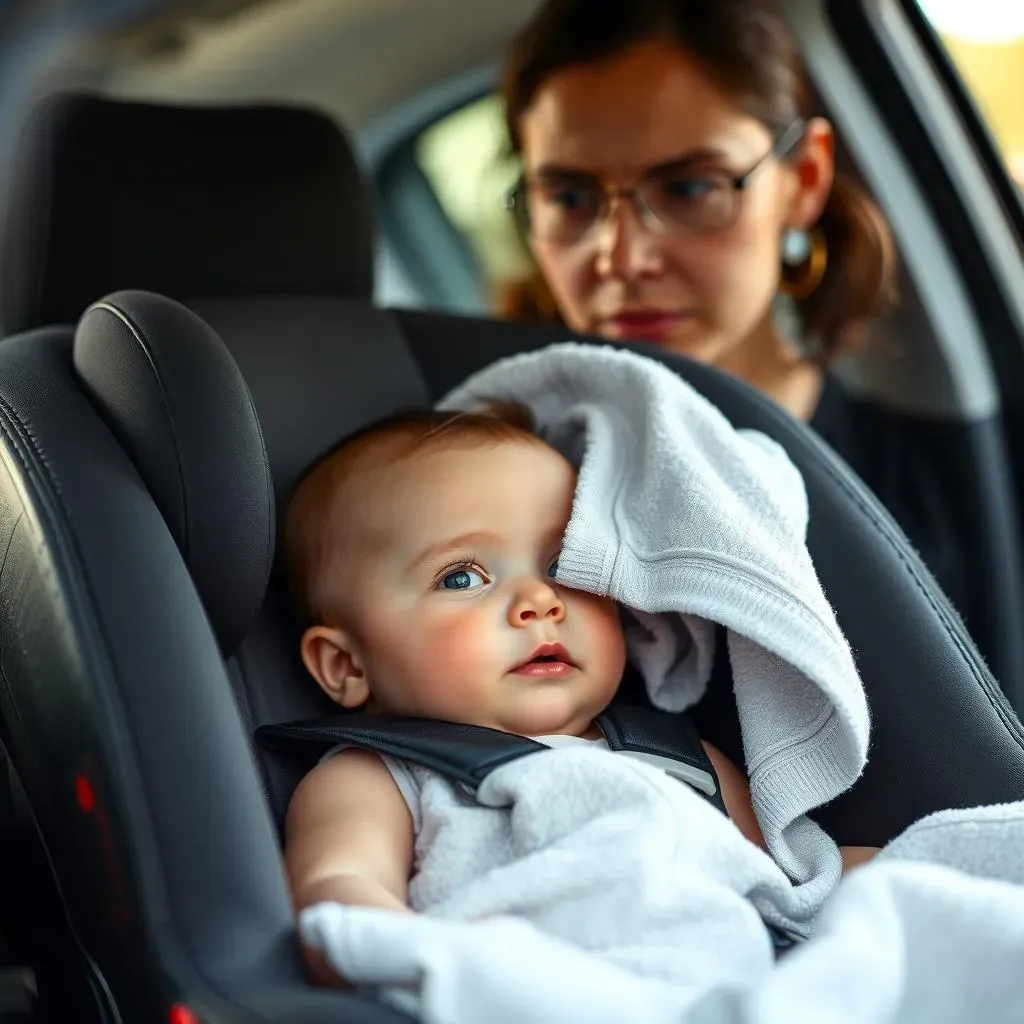Table of Contents
Worried about your little one overheating in their car seat? It's a common concern, especially during those sweltering summer months. You might think, "Can a towel on top of carseat harm a baby?" It seems innocent enough – a simple way to provide some shade and keep them cool. However, that simple solution could pose serious risks to your child's safety. In this article, we'll dive deep into why placing a towel on top of a car seat can be more dangerous than you think. We'll explore the potential hazards, including interference with the car seat's harness system and overheating risks. But don't worry, we won't leave you hanging! We'll also provide safe and effective alternatives to keep your baby comfortable and protected during car rides. Get ready to learn essential car seat safety tips, debunk common myths, and ensure your precious cargo is always riding in style – and safety.
Understanding the Risks: Why a Towel on Top of a Car Seat Can Be Dangerous
Understanding the Risks: Why a Towel on Top of a Car Seat Can Be Dangerous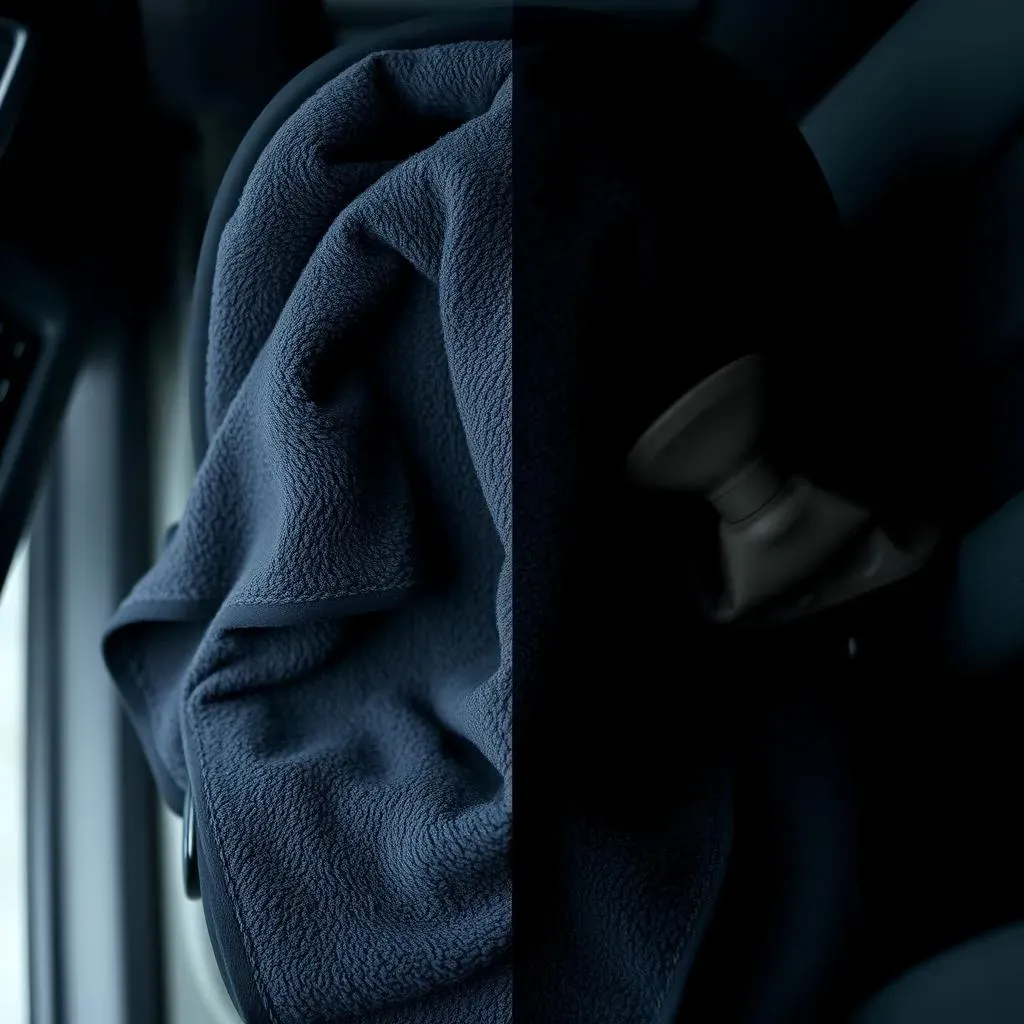
let's get real about car seat safety. You see that adorable baby seat? It's engineered to protect your child in a very specific way. Now, think about tossing a towel over it. Seems harmless, right? Wrong. That towel can mess with the entire safety system. Car seats are crash-tested meticulously. Adding a towel throws a wrench into that whole process. It can compress in an accident, creating slack in the harness. And slack? That's a big no-no. It means your baby isn't as secure as they should be, increasing the risk of injury.
It's like this: imagine you're wearing a seatbelt. If it's loose, you're going to move around more in a crash. Same principle applies here. A towel adds extra material between the harness and your baby, making it harder to get a snug fit. And a snug fit is what keeps your little one safe and sound. It's not just about crashes, either. Even during regular driving, a loose harness can be dangerous. Your baby could slump over or even wriggle free. No parent wants that!
- Compromised Harness Fit: Towels add bulk, preventing a snug and secure harness fit.
- Overheating Risk: Dark-colored towels can trap heat, raising the car seat temperature to dangerous levels.
- Crash Test Interference: Towels can alter how the car seat performs in a crash, reducing its effectiveness.
Plus, think about the material of the towel itself. Is it breathable? Probably not as much as the car seat fabric. This can lead to overheating, especially in warmer weather. Babies can't regulate their body temperature as well as adults, so it's crucial to keep them cool. A towel traps heat, creating a mini-oven effect inside the car seat. Not good. So, while your intentions are good, a towel on top of a car seat is a definite safety hazard. There are much better ways to keep your baby comfortable without compromising their well-being. We'll get to those in a bit.
Safe Alternatives: How to Keep Your Baby Cool and Comfortable in the Car
Safe Alternatives: How to Keep Your Baby Cool and Comfortable in the Car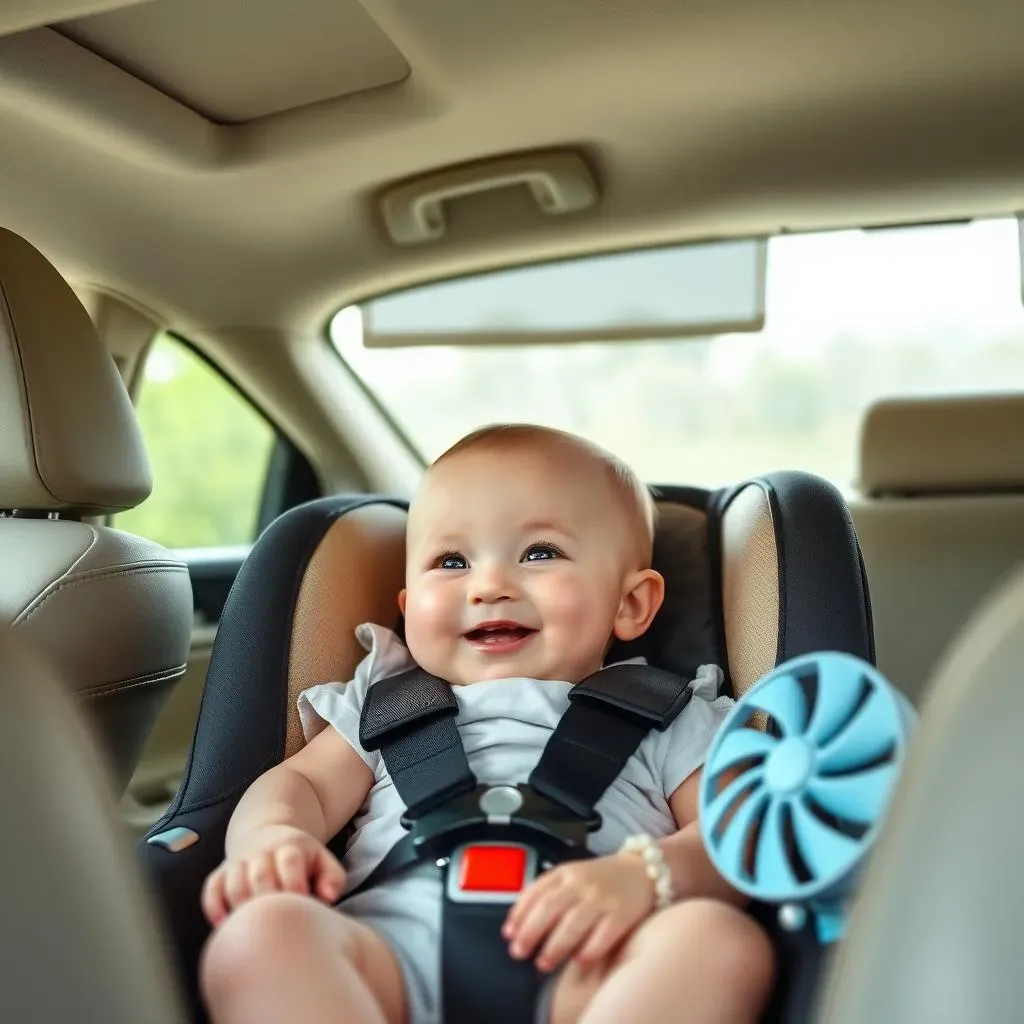
Alright, so ditching the towel is a must, but how do you actually keep your baby cool and comfy? First off, think about pre-cooling the car. Blast that AC for a few minutes before you even put your baby in the seat. It makes a huge difference! You can also use window shades to block out direct sunlight. Those little suction cup ones are great, but make sure they don't obstruct your view while driving. Another option is a car seat fan. These little gadgets attach to the car seat and circulate air, keeping your baby from getting too sweaty. Just make sure the fan is safely attached and won't become a projectile in case of an accident.
What about clothing? Dress your baby in light, breathable fabrics like cotton. Avoid heavy layers or anything that could trap heat. A simple onesie is often the best choice. And remember, hydration is key! If your baby is old enough to drink water, offer it frequently during the car ride. For younger babies, breastfeeding or formula feeding can help keep them hydrated. Now, let's get into some specific products that can help.
Alternative | Description | Benefits |
|---|---|---|
Car Seat Fan | Attaches to the car seat to circulate air. | Helps prevent overheating. |
Window Shades | Blocks sunlight from entering the car. | Reduces heat and glare. |
Breathable Fabrics | Lightweight cotton or muslin clothing. | Allows air to circulate and keeps baby cool. |
Car Seat Safety 101: Essential Tips for Protecting Your Little One
Car Seat Safety 101: Essential Tips for Protecting Your Little One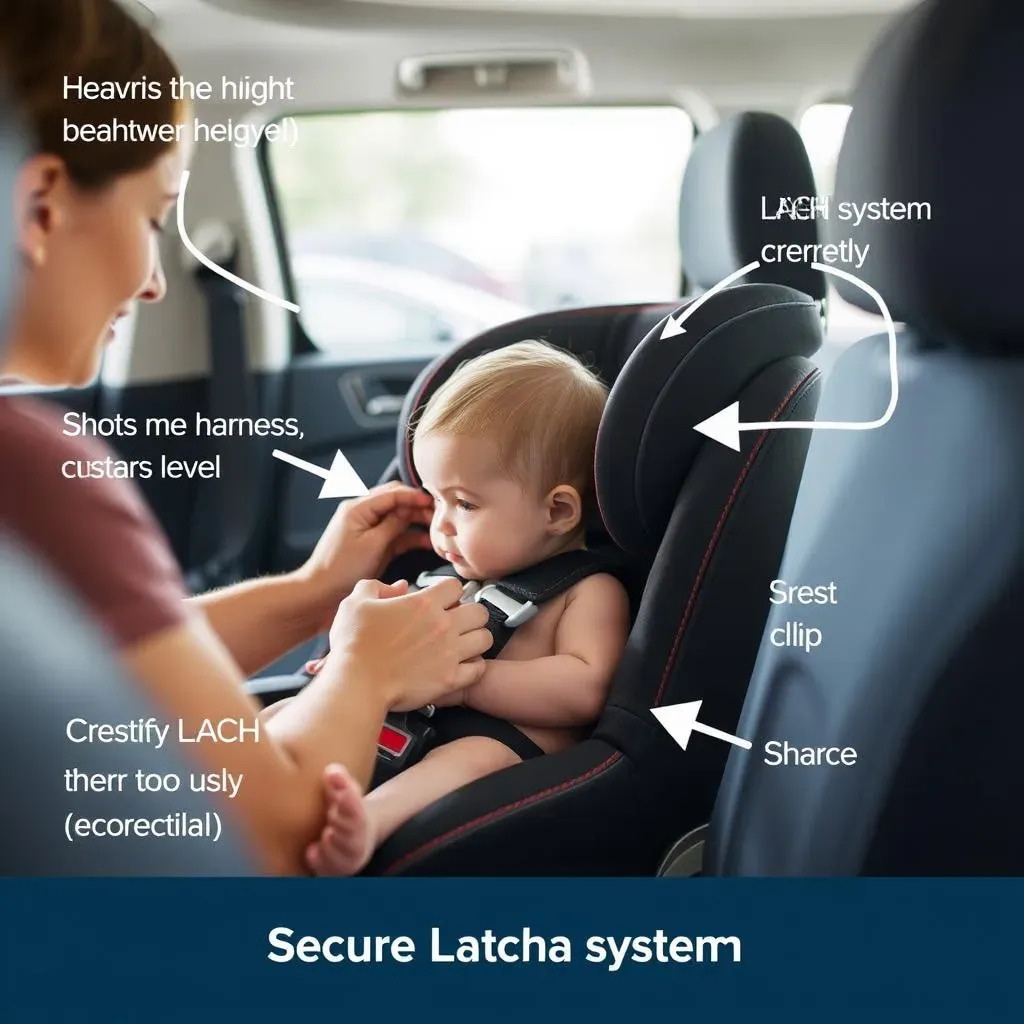
Choosing the Right Car Seat
Alright, let's talk car seats! Picking the right one can feel like decoding ancient hieroglyphs, but it doesn't have to be. First things first, age and weight matter. Is your baby a tiny newborn or a growing toddler? That'll determine whether you need an infant car seat, a convertible car seat, or a booster seat. Read the car seat's label carefully to make sure it's appropriate for your child's size and weight. Don't just eyeball it! Each car seat has specific height and weight limits, and exceeding those limits can compromise safety.
Then, consider your car. Not all car seats fit in all cars. Before you buy, check the car seat's compatibility with your vehicle. Many manufacturers have fit guides on their websites. You can also visit a local fire station or car seat safety technician for help. They can show you how to properly install the car seat in your specific car. Speaking of installation, that's where things can get tricky. Most car seat manuals are about as clear as mud. But don't worry, we'll break it down.
Mastering the Installation
so you've got the right car seat, now comes the fun part: installation! Read the manual. I know, I know, nobody likes reading manuals, but trust me, it's essential. Follow the instructions step-by-step. Make sure the car seat is installed tightly and securely. It shouldn't move more than an inch in any direction. Use either the seat belt or the LATCH system. Don't use both at the same time unless the car seat manual specifically says it's okay. If you're using the seat belt, make sure it's locked. Most cars have a locking mechanism that you can activate by pulling the seat belt all the way out. If you're using the LATCH system, make sure the connectors are securely attached to the anchor points in your car.
Once the car seat is installed, double-check everything. Is the harness at the correct height? Is the chest clip at armpit level? Is the car seat facing the right direction? These details matter! And remember, if you're not sure about something, get help. A certified car seat safety technician can inspect your installation and make sure everything is perfect. It's worth the peace of mind!
"Car seat safety is not a suggestion, it's the law, and more importantly, it's about protecting your most precious cargo."
Harnessing the Power of Correct Straps
So, the car seat is installed, now let's talk straps. The harness straps are what keep your baby secure in the event of a crash, so getting them right is crucial. Make sure the straps are snug. You should be able to pinch only a small amount of webbing at your baby's shoulder. If the straps are too loose, your baby could be ejected from the car seat in a crash. But don't make them too tight either! You should be able to slide a finger between the strap and your baby's chest. The chest clip is also important. It should be at armpit level, not down on your baby's tummy. This helps keep the harness straps in the correct position.
And remember, never add padding or aftermarket products to the car seat unless they're specifically approved by the manufacturer. These products can interfere with the car seat's safety performance. It's tempting to add extra padding for comfort, but it's not worth the risk. Stick to the car seat as it was designed. Regularly check the harness straps for wear and tear. If you see any fraying or damage, replace them immediately. Safety first, always!
Debunking Car Seat Myths: Towels, Blankets, and Beyond
Debunking Car Seat Myths: Towels, Blankets, and Beyond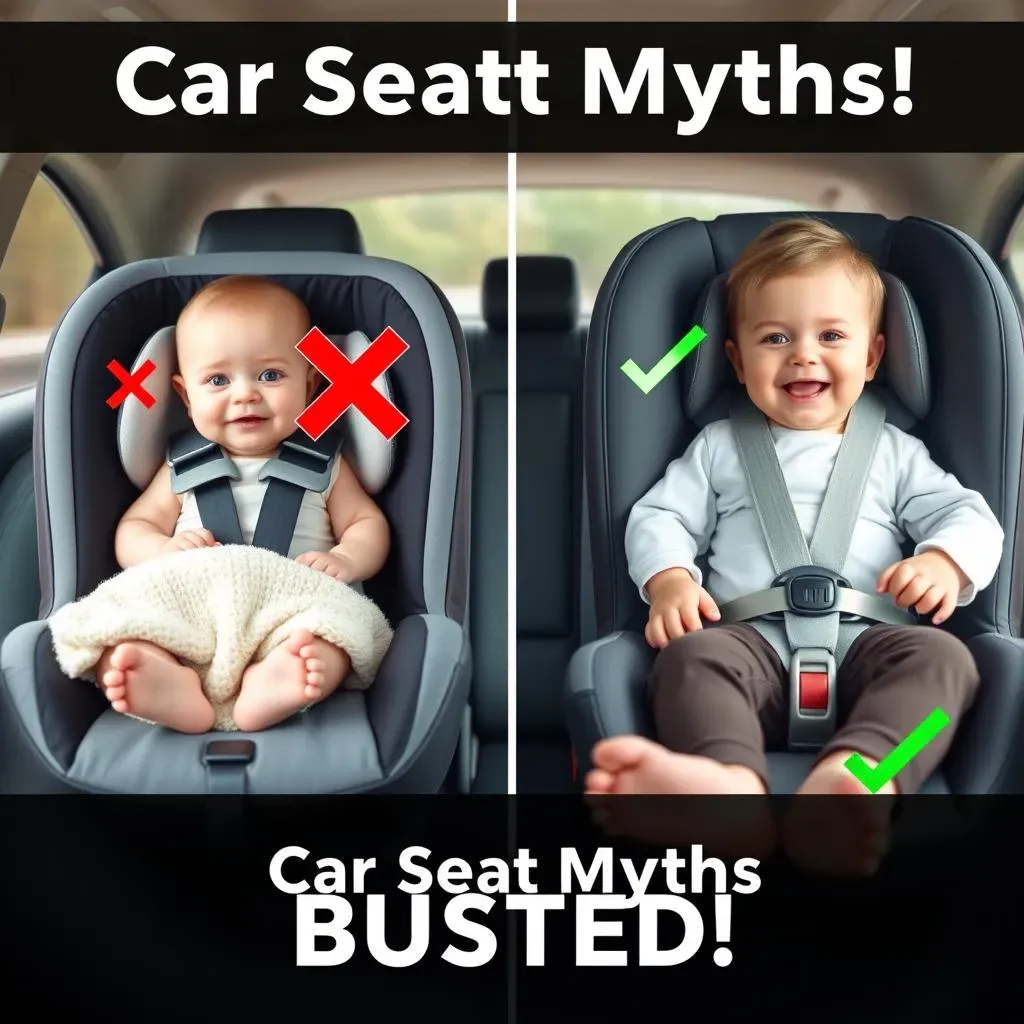
Alright, let's bust some myths! You know how grandma always says, "Just put a little blanket over the baby, dear"? While the intention is sweet, blankets and car seats don't mix. Just like towels, blankets add extra bulk between the harness and your baby. This can compromise the harness fit and reduce its effectiveness in a crash. Plus, blankets can easily be kicked off, leaving your baby exposed to the sun or cold. It's better to dress your baby appropriately for the weather and skip the blanket altogether. What about those cute car seat covers you see online? The ones with the fluffy lining and adorable patterns? Tempting, I know, but most aftermarket car seat covers haven't been crash-tested and can interfere with the car seat's safety features. Stick to the car seat as it was designed. If you want to add some style, use accessories that are specifically approved by the manufacturer.
Another common myth is that you can turn your child forward-facing as soon as they turn one year old. Nope! Rear-facing is safest for as long as possible. Keep your child rear-facing until they reach the maximum height or weight limit of their car seat. This could be two, three, or even four years old! Rear-facing car seats distribute crash forces more evenly across the child's body, reducing the risk of injury. Forward-facing is fine eventually, but delay it as long as you can. And finally, let's talk about used car seats. Buying a used car seat can save you money, but it's not always the best idea. You don't know the car seat's history. Has it been in a crash? Is it expired? Car seats have expiration dates, usually six to ten years after the date of manufacture. Expired car seats can become brittle and less effective. If you do buy a used car seat, make sure it's from someone you trust, and check the expiration date and crash history carefully.
Myth | Reality |
|---|---|
Blankets are safe to use in car seats. | Blankets add bulk and can compromise the harness fit. Dress your baby appropriately instead. |
Aftermarket car seat covers are a good way to add style. | Most aftermarket covers haven't been crash-tested and can interfere with safety features. |
You can turn your child forward-facing at one year old. | Keep your child rear-facing as long as possible, until they reach the car seat's height or weight limit. |
Used car seats are always a good deal. | Check the expiration date and crash history carefully before buying a used car seat. |
Conclusion: Prioritizing Safety and Comfort for Your Little One
Ultimately, while the intention behind using a towel on top of a car seat might be to shield your baby from the sun or keep them cool, the risks far outweigh the perceived benefits. By understanding the potential dangers and embracing safer alternatives, you can ensure your child's car rides are both comfortable and secure. Remember, a little extra planning and awareness can make all the difference in protecting your precious passenger.
